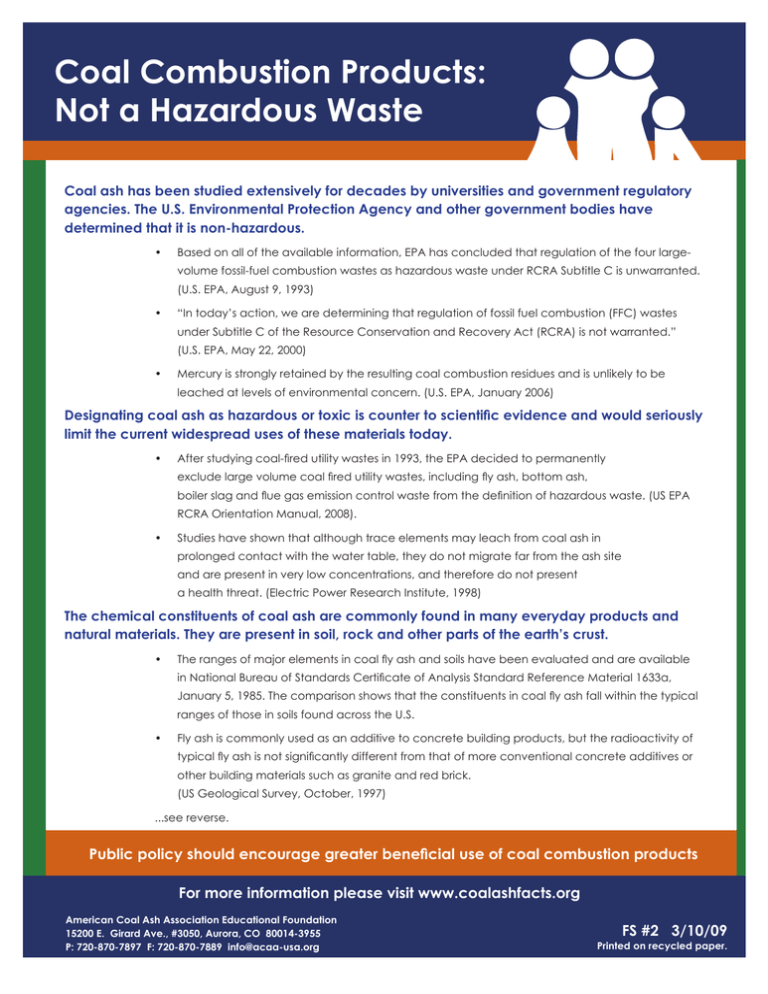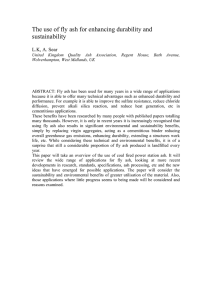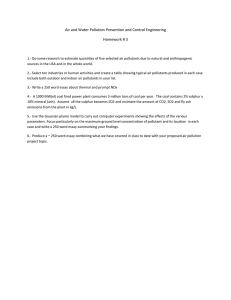Coal Combustion Products: Not a Hazardous Waste
advertisement

Coal Combustion Products: Not a Hazardous Waste Coal ash has been studied extensively for decades by universities and government regulatory agencies. The U.S. Environmental Protection Agency and other government bodies have determined that it is non-hazardous. • Based on all of the available information, EPA has concluded that regulation of the four largevolume fossil-fuel combustion wastes as hazardous waste under RCRA Subtitle C is unwarranted. (U.S. EPA, August 9, 1993) • “In today’s action, we are determining that regulation of fossil fuel combustion (FFC) wastes under Subtitle C of the Resource Conservation and Recovery Act (RCRA) is not warranted.” (U.S. EPA, May 22, 2000) • Mercury is strongly retained by the resulting coal combustion residues and is unlikely to be leached at levels of environmental concern. (U.S. EPA, January 2006) Designating coal ash as hazardous or toxic is counter to scientific evidence and would seriously limit the current widespread uses of these materials today. • After studying coal-fired utility wastes in 1993, the EPA decided to permanently exclude large volume coal fired utility wastes, including fly ash, bottom ash, boiler slag and flue gas emission control waste from the definition of hazardous waste. (US EPA RCRA Orientation Manual, 2008). • Studies have shown that although trace elements may leach from coal ash in prolonged contact with the water table, they do not migrate far from the ash site and are present in very low concentrations, and therefore do not present a health threat. (Electric Power Research Institute, 1998) The chemical constituents of coal ash are commonly found in many everyday products and natural materials. They are present in soil, rock and other parts of the earth’s crust. • The ranges of major elements in coal fly ash and soils have been evaluated and are available in National Bureau of Standards Certificate of Analysis Standard Reference Material 1633a, January 5, 1985. The comparison shows that the constituents in coal fly ash fall within the typical ranges of those in soils found across the U.S. • Fly ash is commonly used as an additive to concrete building products, but the radioactivity of typical fly ash is not significantly different from that of more conventional concrete additives or other building materials such as granite and red brick. (US Geological Survey, October, 1997) ...see reverse. Public policy should encourage greater beneficial use of coal combustion products For more information please visit www.coalashfacts.org American Coal Ash Association Educational Foundation 15200 E. Girard Ave., #3050, Aurora, CO 80014-3955 P: 720-870-7897 F: 720-870-7889 info@acaa-usa.org FS #2 3/10/09 Printed on recycled paper. Concrete of the Roman Empire was made with volcanic ash, a silicious material like fly ash, which is used to increase strength and durability. The chemical constituents of coal ash are commonly found in many everyday products and natural materials. They are present in soil, rock and other parts of the earth’s crust. Typical Values for Selected Elements as Contained in Soils and Fly Ash* Arsenic Barium Cadmium Lead Mercury Selenium 8-1000 0.01 - 10 0.10 - 10 RANGE Soils 0.1-100 10.0-7000 0.01-7 Ash 0.0003-391 0.02-10850 0.01-76 0.02-273 0.013-49.5 0.0003-49.5 AVERAGE Soils 50 800 1 50 0.05 0.5 Ash 100 1000 3 90 0.1 10 4.6 806.5 3.4 56.8 0.1 7.7 MEDIAN Ash * all data shown in parts per million (ppm) Data sources: EPA, NIST, USGS





